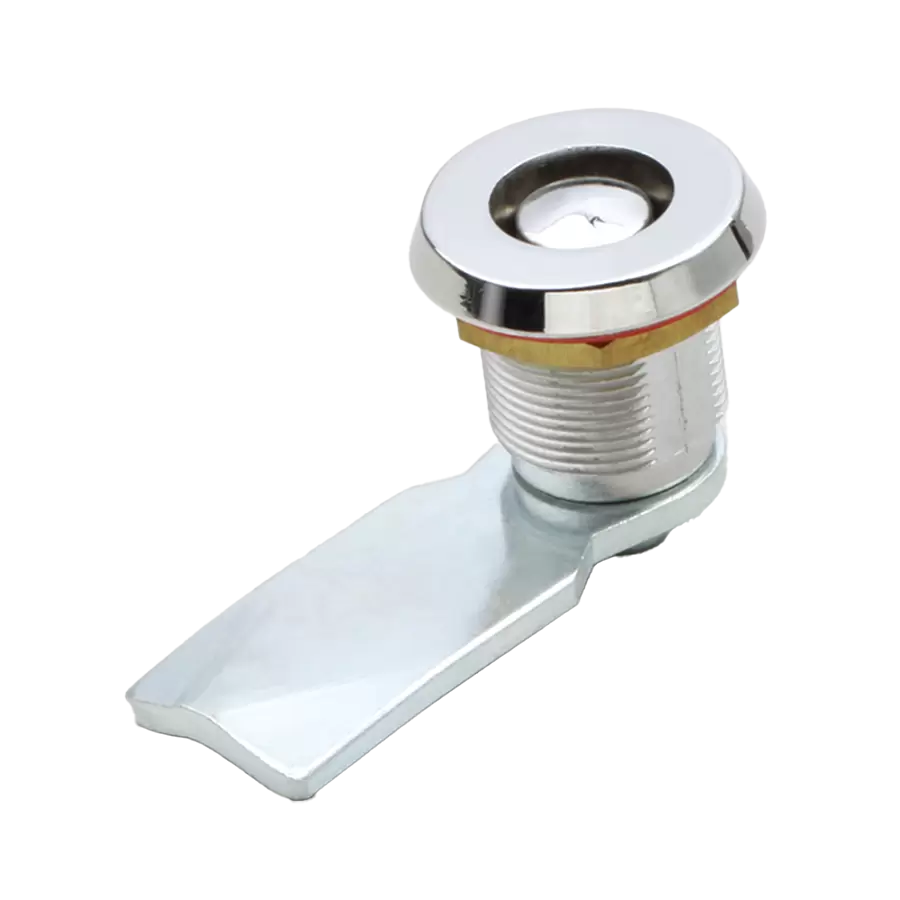In today's rapidly evolving transportation sector, electronic toll collection (ETC) systems are an integral part of modern infrastructure. These systems streamline toll collection, reduce traffic congestion, and improve overall transportation efficiency. One of the essential components of ETC systems is the ETC cabinet, which houses critical electronic equipment and devices responsible for toll management. To ensure the security, durability, and efficient operation of these cabinets, manufacturers and designers have turned to the cam latch. This simple yet effective mechanism plays a crucial role in safeguarding the contents of these cabinets while providing ease of access for maintenance and repair.
What is a Cam Latch?

A cam latch is a mechanical fastener that uses a rotating cam to lock and unlock a door or panel. It is widely used in applications requiring secure, quick, and reliable access, such as electronic enclosures, server cabinets, and ETC cabinets. The design typically involves a cam that rotates as the latch is turned, allowing it to engage or disengage the locking mechanism. This ensures that the door or panel is securely closed when necessary, while providing fast and easy access for technicians or authorized personnel.
In ETC cabinets, the cam latch offers an ideal solution for locking doors that house sensitive electronic equipment. The robust design of the cam latch guarantees that the cabinet remains sealed during operation while allowing fast access to maintenance crews when needed.
Why Use Cam Latches in ETC Cabinets?
1. Enhanced Security for Critical Equipment
The primary function of ETC cabinets is to protect sensitive electronic equipment from environmental factors, tampering, or unauthorized access. A cam latch provides an effective locking mechanism that is both tamper-resistant and secure. When properly installed, a cam latch can keep the contents of the cabinet safe from external threats, preventing unauthorized individuals from gaining access to valuable equipment. In addition to theft prevention, the cam latch also ensures that the cabinet remains tightly sealed, protecting the equipment from environmental elements such as dust, moisture, and extreme temperatures. This is especially important in outdoor applications where ETC cabinets are exposed to harsh conditions, ensuring the longevity and functionality of the devices inside.
2. Ease of Use and Accessibility
While security is a top priority, ease of access is equally important for the maintenance and servicing of the electronic equipment within ETC cabinets. Traditional locks often require specialized tools or complex procedures for unlocking, which can slow down maintenance work. In contrast, cam latches offer a simple yet effective solution for quick access. By turning a knob or handle, a technician can easily unlock the cabinet and perform necessary repairs or updates on the equipment. The ease of use of cam latches makes them ideal for locations where regular maintenance is required. Whether it is for troubleshooting, software updates, or replacing components, the fast access provided by a cam latch ensures that the work can be completed swiftly and efficiently without compromising the security of the system.
3. Durability and Long-Term Performance
ETC cabinets are designed to withstand various environmental conditions, including extreme weather, physical impact, and prolonged exposure to outdoor elements. Similarly, the locking mechanisms used in these cabinets need to be equally durable and reliable. Cam latches are known for their rugged construction and long-term performance. Made from corrosion-resistant materials like stainless steel or aluminum, they can endure harsh conditions without losing their functionality. A properly installed cam latch can last for years, providing a secure closure and maintaining its locking function over time. This durability is crucial for ETC systems that may be deployed in remote or difficult-to-access locations, where the need for maintenance is infrequent, but the importance of security is paramount.
4. Cost-Effective Solution
When compared to more complex locking systems, cam latches are a cost-effective option for locking ETC cabinets. Their simple mechanical design reduces manufacturing costs, which can be a significant advantage in large-scale deployments of ETC systems across highways and toll booths. The relatively low cost of cam latches does not compromise their performance, making them an ideal choice for ensuring both security and accessibility without breaking the budget. Additionally, the ease of installation and minimal maintenance requirements of cam latches further reduce operational costs. This makes them a popular choice for many industries, including transportation, telecommunications, and electrical systems.
Cam latches play a vital role in ensuring the security, accessibility, and efficiency of ETC cabinets. These simple yet reliable locking mechanisms provide robust protection for sensitive electronic equipment, ensuring that it remains safe from tampering, theft, and environmental hazards. Their versatility, durability, and ease of use make them an ideal choice for ETC applications, whether it's for toll collection systems, communication enclosures, or power distribution cabinets. By utilizing cam latches, ETC system providers can achieve a balance between security and accessibility, enhancing the overall performance and reliability of their infrastructure. As more transportation systems worldwide adopt electronic tolling solutions, the demand for secure and efficient locking mechanisms like cam latches will continue to grow, cementing their place as a critical component in modern ETC systems.






